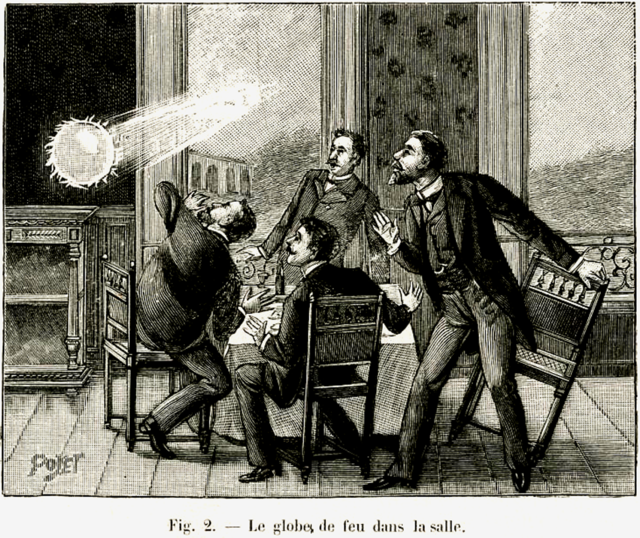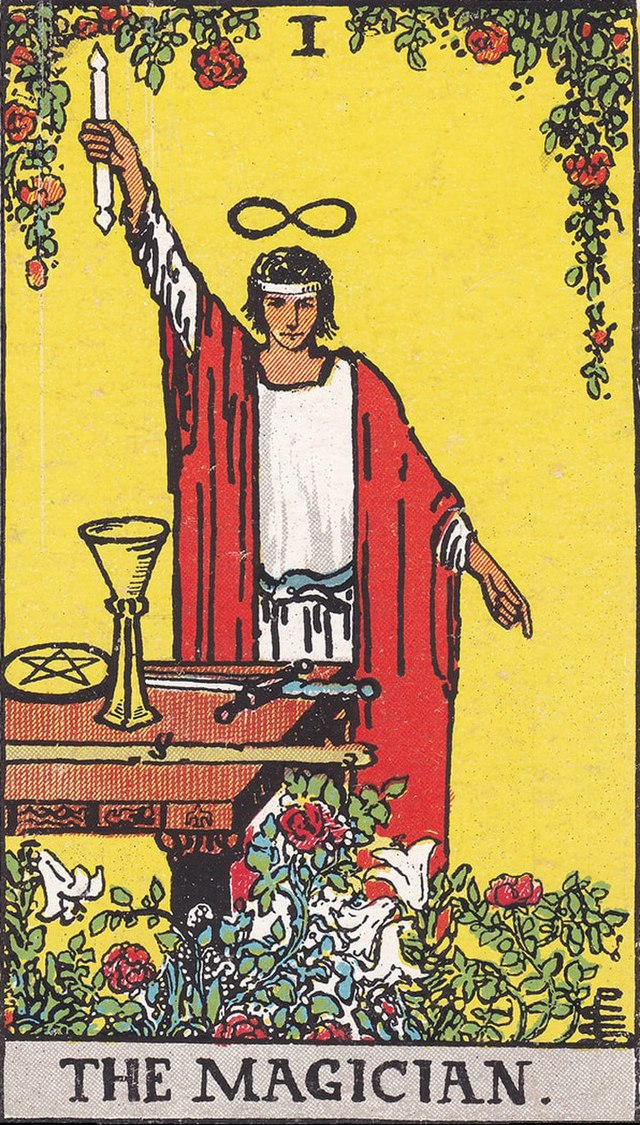The following is a description of an asynchronous play-by-post game I ran for a while, with a few elaborations and extras.
It's from the perspective of advising someone else who might want to run a game in the same setting, mostly for my own convenience while writing. That said, it might be a decent example of how to manage a magic system that uses very little abstraction.
The Premise:
The players are a group of Machinists, tinkerers who build wonderous devices from metal, runes, and soulstuff. They scrape out a living at the border of the Waste - a perilous, continuously shifting magical wasteland that was created decades ago by the impact of a falling star, and which has since been used as the dumping ground for an empire's worth of faulty devices and alchemical pollution.
Thaumaturgical surveys have detected an anomaly at the center of the exclusion zone, something with a magical signature far stronger than any machine yet created by mortal hands. It could merely be a danger - but it could also be the key to controlling the forces that shape the wasteland, or to reproducing the cataclysm which created it.
The players, for reasons known only to themselves, have decided that the prospect of getting their hands on those secrets outweigh the considerable risk of mounting an expedition past the Waste's outermost edge.
The Magic System:
Every thinking being has a soul, a sort of aetheric nucleus which houses their memories and personality. The souls of beings with a physical body are typically entangled with their brain (1), but there also exist disembodied souls, more colloquially known as spirits, which are capable of persisting without a body to anchor them (2).
Souls naturally generate thaum, magical energy that can be used to power runes or sorcery.
Each rune has a name and a function. To power a rune with your own soul, you need only touch the rune and will it to be so - but this is an exhausting process, and human souls have only so much energy to spare. More powerful devices often make use of bound spirits, entities confined by runic enclosures that drain thaum and induce a sort of dreamless sleep. The practice is ethically dubious, but effective - as fueling more advanced creations otherwise requires inefficient thaumic batteries or simultaneous contributions from many operators at once.
Conversely, sorcery is performed by channeling thaum through knots that have formed in one's soul. Each knot is an clot of aetheric structure that embodies a particular concept, and prospective sorcerers must form them by taking part in initiatory rituals, undergoing ordeals, or engaging in obsessive study. There is also the unwise route of experimental soul-surgery.
Gameplay:
When I last ran this game, the party started play with an airship. It may be preferable for them to remain earthbound, in which case I would instead provide a crawler or an automobile. Access to a single large vehicle is an important part of the setup - it forces players to work together, always a consideration in play-by-post games that are freeform enough that characters could easily wander off in different directions. It also acts as a mobile storage space and workshop, in a setting where crafting is an essential part of gameplay.
I might give players a choice between a few transports with different strengths and weaknesses. Most of the options available in-setting will be bulky constructions that operate by harnessing the power of a bound spirit, but if the table is particularly averse to that idea, it's possible to acquire a lightweight vehicle that can (effortfully) be run with thaum from the characters' own souls, or a somewhat awkward mundane conveyance like a zeppelin or steam-powered cart.
It is also essential that players have tools that allow them to shape wood, stone, metal, etc so that they can create runic equipment. These tools are themselves likely to be runic devices. My go-to option is a runic array shaped like a set of interlocking rings which allows the players to deform matter held within it.
The Waste is ideally represented by a hexcrawl, but one where the hexes change periodically. Locations are occasionally shuffled around by dimensional instability. Spatial anomalies aside, hexes can also suddenly be contaminated with extradimensional flora and fauna, blasted by storms, terraformed by buried machines, or altered by spirits. The longer players spend in one place, the less the landscape behind them will look like the one they originally passed through. Environmental hazards are common and varied.
Ideally there should probably also be other factions attempting to reach the Center. I haven't run that variation, though so unfortunately there aren't any further details to go into.
Running Runes, Sorcery, & Spirits:
I have provided a list of some runes I used at the bottom of this post. I don't necessarily endorse including all of them - Reservoir in particular is one that I would strip out if I were to run the game again, as it makes storing thaum for later use too straightforward. There are also many redundancies, because I allowed players to formulate variations of runes they already knew. I have stripped out the worst offenders.
There is a core set of runes that the players should be provided with at the start of the game. These are runes which serve essential functions, like the "transfer" symbols that, when chained together, act like wires that can run thaum from one part of an object to another, making it possible to control a large device via a contact point in the handle or console.
These core runes are:
Transfer (for transferring power to other runes)
Dissonance (for binding spirits)
Cage (for holding a bound spirit in a hollow container)
Projection (as a basic way to manipulate thaum)
There should also be something that lets players make simple weapons - I used "burst," which acts as a basic force gun, but something like a sharpness rune would also work fine.
Players should be able to acquire a new rune or two by taking apart any runic device they find. The GM should also ideally be able to say a few words about how the device works. For example, a bomb might be triggered when plates bearing two halves of an explosive rune are allowed to touch.
Runes can be written in any medium - painted, embossed, engraved, et cetera - so long as it's possible to reproduce the rather intricate symbols in fine enough detail.
Thaum dissipates quickly in empty air, unless there is an ongoing effect that preserves it.
Sorcery is more freeform. As described before, knots are gained from initiations, study, ordeals, and soul-surgery. The key is that an experience must reshape your soul - either directly, via exposure to spirits, high concentrations of thaum, or surgical modification, or indirectly by changing the sorcerer's identity. Each knot corresponds to a particular concept - "life," "rage," "annihilation," "force," "plants," and so on - and can be invoked to cause effects related to that concept. Finesse is difficult and must be trained, as must more exotic interpretations of the concept in question. Generally, a sorcerous spell must promote or manipulate the concept it's associated with, and cannot directly reduce or eliminate it. A sorcerer with a rage Knot could induce rage or redirect it, but would be incapable of soothing it.

Spirits can look like more or less anything. They also have varying levels of intelligence, ranging from that of a plant to that of a superhuman mastermind. Their bodies are incorporeal, essentially aetheric shells filled with thaum. They can be harmed by physical objects, very inefficiently, but to truly hurt them it is generally necessary to use attacks that make direct use of thaum, a more conceptual effect like those associated with sorcery, or runes like Dissonance that influence the soul directly (3). This requirement is more flexible than it may seem - with sufficient force behind it, even a charged line of Transfer runes will do. Spirits almost always have supernatural abilities equivalent to those of sorcerers.
Spirits originate from the space between dimensions, and sometimes cross into reality in places where dimensional boundaries are thin (this happens frequently in the Waste). The crossing and subsequent adaptation to conditions within reality is difficult: some spirits fizzle out within moments of arrival, and those that survive rarely have comprehensible memories of the Outside.
There are really no further rules. Players can make any runic device they can comprehensibly (and COMPACTLY) describe - the GM pictures it and uses their understanding of the setting to determine whether it works, and if not, to determine what goes wrong. Expect some very creative problem-solving: one of my players designed a gun that shaped Thaum into Dissonance runes and fired them at the spirits they were going to fight. There will also be some getting lost in the weeds.
The Ending:
The object at the center of the wastes is a massive titanium sphere, cracked and partially disintegrated, illuminated by flares of escaping Thaum and covered entirely with celestial runes. All astronomical bodies in this setting are actually mechanisms of vast and abstract power. Stars, in particular, are meant to reinforce and manipulate dimensional boundaries. This one broke when it fell from the sky, and its death throes are causing the dimensional instability characteristic of the Waste.
The things that would be possible for someone who controlled or studied this device scarcely bear contemplation, and are certainly outside the scope of this game. Successfully laying claim to it is a win condition - provided that the players can do so before some other group beats them to it.
Footnotes:
(1): The brain acts as a sort of metaphysical scaffold, keeping the soul firmly anchored to the physical body and supporting it as it grows. Damage to that scaffold - of the sort that might be caused by asphyxiation or blunt force trauma - will also affect the soul, in much the same way that knocking out a load-bearing wall would affect the structural integrity of a building.
(2): Great thaumaturges from ages past are said to have been able to disentangle brain from soul in order to become spirits themselves, but modern experiments with this aim have been less than successful.
(3): Human souls can also theoretically be harmed by these sorts of attacks, but are resistant to them as a result of being anchored to the body. Soul-surgery is usually performed either sorcerously or with implements that produce highly concentrated and intense thaumic effects
Sample Runes:
Transfer: Transfers thaum to the rune ahead of it. Can be chained together to transport thaum over the surface of an object.
Dissonance: When directly touching a spirit, loosens its control over thaum. Self-sustaining once the spirit can no longer prevent the thaum it generates from activating nearby runes.
Cage: When repeatedly scribed on the outside of a container, creates a stable shell of thaum that can hold a spirit in place.
Projection: Launches thaum outwards, perpendicular to the surface the rune is printed on.
Burst: Consumes thaum to launch a blast of force.
Pressure: Exerts even force on whatever is in front of the rune, with intensity that scales directly with the amount of energy that is used.
Fork: A modified transference rune that divides energy into two equally-sized steams. Used to regulate the overall level of energy that is fed to each component.
Reservoir: Energy seems to build up in this rune, forming a pool that nearby transfer runes can draw from. Used to reserve energy for maneuvering and stabilize the engine's output.
Forcefield: Consumes thaum to generate a flat plane of solid force.
Foam: Creates small bubbles of thaum.
Halo: Concentrates thaum several inches above the rune.
Clot: Causes energy to stick together and accumulate.
Linkage: Directs magic towards matching sigils on other devices. Slight variations in the dots at the center of this rune can be used to connect it to different networks.
Clairaudience: A scrying rune that allows the being powering it to hear all sounds it's exposed to.
Waste: Consumes thaum.
Ray: Consumes thaum to fire a beam of destructive magic.
Unburden: Consumes thaum to reduce the weight of whatever it is printed on.
Ooze: Consumes thaum to produce toxic sludge.
Arc: A targeting rune that makes magical effects curve towards whichever direction the glyph is pointing.
Partition: A rune that repels energy. Powering it is difficult. The designers of the Thaumic Forge resorted to a long chain of Projections.
Valve: A Transfer variant rune that restricts the flow of Thaum. Its output can be adjusted by varying the angle of two specific lines.
Oculus: Powering this rune with your own energy allows you use it as an additional eye.
Kinesthesia: Powering this rune with your own energy allows you to sense its approximate location.
Spark: Consumes energy to create a concentrated ball of electricity.
Bolt: Consumes energy to create a lightning bolt.
Fog: Consumes energy to create an expanding cloud of mist.
Kamikaze: Consumes energy to violently shatter the object it's printed on.
Smelt: Consumes energy to heat up the surrounding area.
Enervate: Weakens and disrupts any spirit that is directly exposed.
Scorch: A rune that consumes energy to produce flame.
Blindsight: A divination rune that provides the person fueling it with a blurry image of everything within a five-meter radius. It is not affected by light, or the lack thereof.
Shockwave: Consumes energy to create a surge of destructive magic.
Attract: Consumes energy to pull at any object that's in front of it.
Confine: A ring of runes that prevents objects from leaving their area of effect.
Reinforce: Consumes energy to increase the durability of the object it is printed on.
Cruor: Transforms energy into blood.
Volatilize: A ring of six runes that consumes energy to make objects more explosive.
Sustain: Consumes energy to prevent a spirit from deteriorating.
Squall: Consumes energy to generate gusts of wind.
Tar: Transforms Thaum into flammable pitch.
Frost: Transforms Thaum into ice.
Blacken: A ring of six runes that consumes Thaum to make objects a darker color.
Filigree: A ring of six runes that consumes Thaum to cover objects in intricate black lines.
Shroud: A rune that consumes energy to surround itself in magical darkness.
Empathy: A divination rune that forms a weak telepathic link between all entities who are currently powering it, allowing them to sense each others' emotions.
Lifesense: A divination rune that allows the entity powering it to perceive nearby Thaum.
Unnerve: Consumes energy to evoke feeling of paranoia and unease in nearby minds. The effects become more pronounced during extended exposure.
Membrane: A weak binding that does not prevent spirits from manipulating thaum.
Imbue: Concentrates Thaum within the object it is scribed on.
Sever: A rune that consumes energy to apply cutting force to whatever is in front of it.
Sensor: A divination rune that provides tactile information to whoever powers it.
Encrust: Consumes Thaum to cover the object it's scribed on with a layer of stone.
Fuse: A Transfer variant that holds energy for one second before moving it onwards.
Hamper: Consumes Thaum to slow down the object it's printed on.













